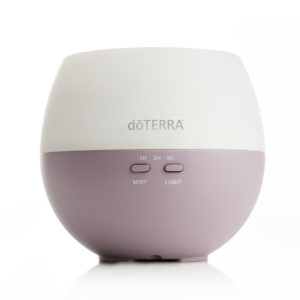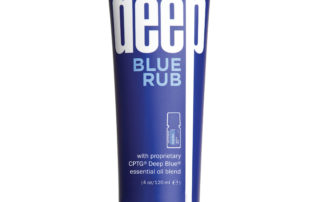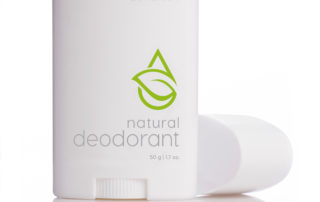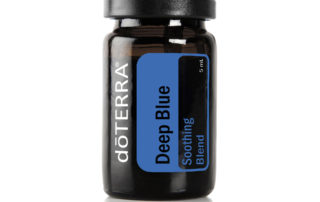What are Essential Oils?
If you have ever enjoyed the scent of a rose, you’ve experienced the aromatic qualities of essential oils. These naturally occurring, volatile aromatic compounds are found in the seeds, bark, stems, roots, flowers, and other parts of plants. They can be both beautifully and powerfully fragrant. They are called volatile because they change state quickly.
When you first open a bottle of essential oil, you instantly notice that the aroma is potent and you can smell it typically even from some distance. The physical and chemical properties of the volatile aromatic compounds that compose essential oils allow them to quickly move through the air and directly interact with the olfactory sensors in the nose. Such unique properties make essential oils ideal for applications inclusion in aromatherapy – using these compounds from plants to help maintain a healthy mind and body – as well as other applications. The type of volatile aromatic compounds present in an essential oil determines both the oil’s aroma and the benefits it offers.
Essential oils can be used for a wide range of emotional and physical wellness applications. They can be used as single essential oils or in complex essential oil blends depending on user experience and desired benefit.
How can essential oils be used?
Traditionally, certain essential oil application methods have been preferred or used exclusively. However, as the research surrounding essential oils continues to develop, a greater understanding of application methods is now understood. Each doTERRA essential oil is carefully and thoroughly tested using the strict CPTG Certified Pure Therapeutic Grade® quality protocol. All application methods are safe when used appropriately, including aromatic, topical, and internal methods. One or multiple application methods can be used for a wide range of emotional and physical wellness applications.Experienced essential oil users will immediately recognize the superior quality standard for naturally safe, purely effective therapeutic-grade doTERRA essential oils. They can be used a single oil at a time or in complex blends in one of three methods:
Topical application is a very effective method for applying essential oils. Because essential oils have low molecular weights and are lipid soluble, they easily penetrate the skin. Once absorbed, they stay in the applied area for a localized benefit.
Although essential oils are readily absorbed, there are many ways to increase absorption. Using a light massage will increase the blood flow to the area of application, in turn improving distribution throughout the body. Use of a carrier oil can also increase absorption, especially in skin that is dry or flaky as it helps moisturize the skin and slow evaporation of the oil.
To decrease the likelihood of developing a skin sensitivity, especially on young or sensitive skin, it is advisable to use a carrier oil (such as Fractionated Coconut Oil) to dilute more potent oils and when trying an oil for the first time. The recommend dilution ratio is typically one drop of essential oil to three drops of carrier oil.
It’s always advisable to use several small doses throughout the day rather than a single large dose. Start with the lowest possible dose (1–2 drops). A topical dose can be repeated every 4–6 hours as needed. Because every individual is unique, the dose will vary for each individual based on size, age, and overall health status.
Beneficial Areas You Can Apply Essential Oils: Neck, forehead and temples, chest and abdomen, arms, legs, and bottom of feet
Other Effective Methods of Topical Application
- Add a few drops of oil to a warm bath
- Make a hot or cold compress by soaking a towel or cloth in water, adding essential oils, and then applying to the desired area
- Add oil to a lotion or moisturizer and then apply to skin
Avoid sensitive areas such as the inner ears, eyes, and skin around the eyes; Also avoid on broken, damaged, or otherwise injured skin unless otherwise specified.

The sense of smell is a tool that can elicit powerful physiologic, mental, and emotional responses.
Essential oils are quickly absorbed by the smell receptors, which have a direct link to the limbic system by way of the olfactory nerve. The limbic system is part of the brain that supports a variety of functions including smell, emotions, behavior, and memory. For this reason, essential oils have an especially powerful effect via aromatic application.
Some essential oils induce uplifting or invigorating effects, while others are more calming. Diffusion is one of the simplest methods for using essential oils aromatically. Diffusers that use cold air or water are ideal. However, using essential oils aromatically does not require any special diffusing devices.
You can achieve the same health benefits by simply placing a few drops of essential oil in the palm of your hand that is then cupped around the nose as you breathe deeply.
Additional aromatic uses For Essential Oils Include:
- Apply oil to a cotton ball and place in the air vents of your vehicle
- Mix oils in a spray bottle with water and mist over furniture, carpet, or linens
- Add oil to a batch of laundry or to dryer sheets
- Use in household surface cleaners
- Add a couple drops to your child’s teddy bear
- Wear a drop or two as perfume
- Heat up water, add oils, inhale to clear sinuses

Certain essential oils have a rich culinary history and can be used as dietary supplements supporting a variety of healthy conditions. When you sprinkle cinnamon on your oatmeal, sip a mug of peppermint tea, or add fresh basil leaves to your spaghetti, you are actually consuming some volatile aromatic essential oil compounds.
Essential oil contributes many health benefits as well as flavoring and aroma properties to foods. When in their concentrated form, essential oils can be used as dietary supplements for more targeted and potent health benefits. Internal use is a very safe and effective method of application because of the sophisticated physiologic processes of our bodies.
When ingested, essential oils directly enter the blood stream via the gastrointestinal tract, where they are transported throughout the rest of the body. Essential oils are lipid soluble so they are readily transported to all organs of the body, including the brain. Then, like all things we consume, essential oils are metabolized by the liver and other organs and are then excreted.
The composition of essential oils is highly complex. Each constituent possesses a unique set of biochemical properties that react with cells and organs in different ways. Although these mechanisms of action are not completely understood, the positive end results have been demonstrated. However, the body is only equipped to handle appropriate doses of essential oils.
Proper dosing according to labeling recommendations and other professional guidelines should be strictly followed to avoid toxicity. Take essential oils internally in a veggie capsule or add to a small amount of applesauce or yogurt

Improve your health. Treat yourself. You deserve it.
Become a member and get 25% off on all dōTERRA products.























